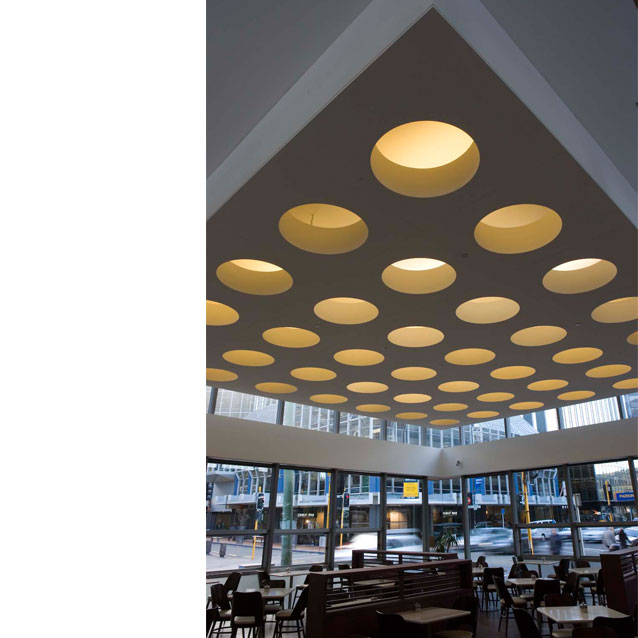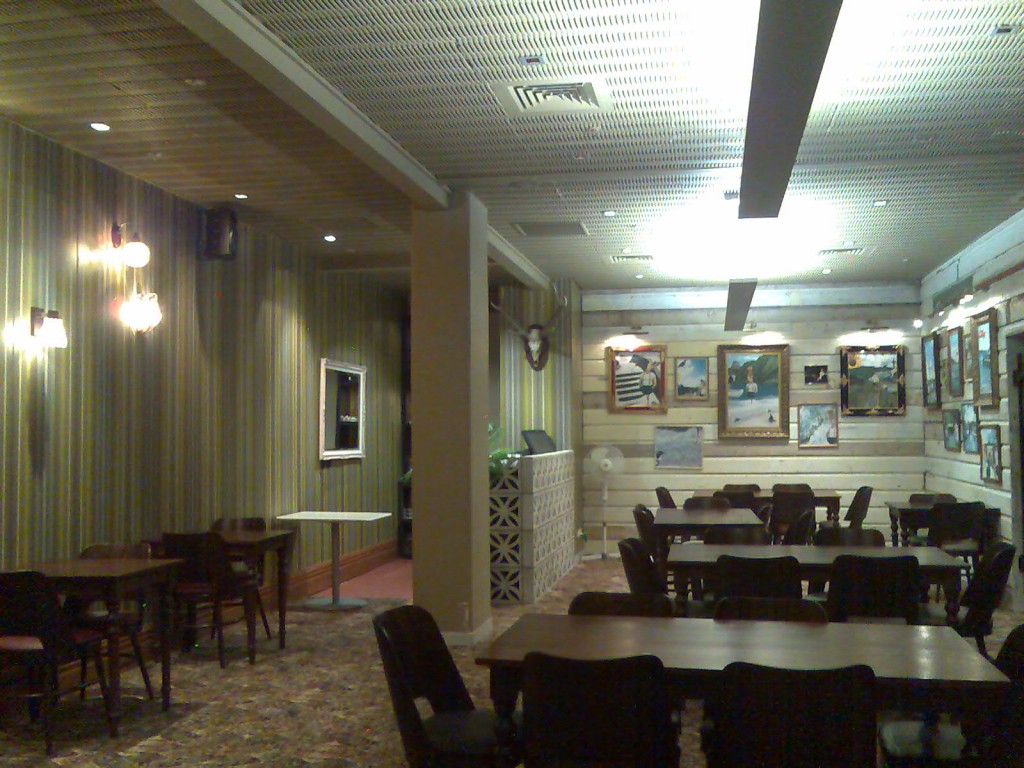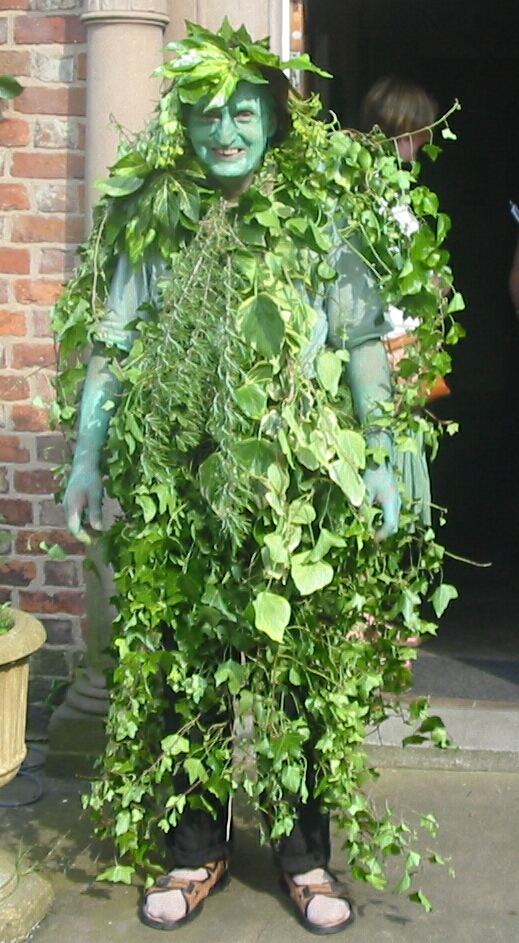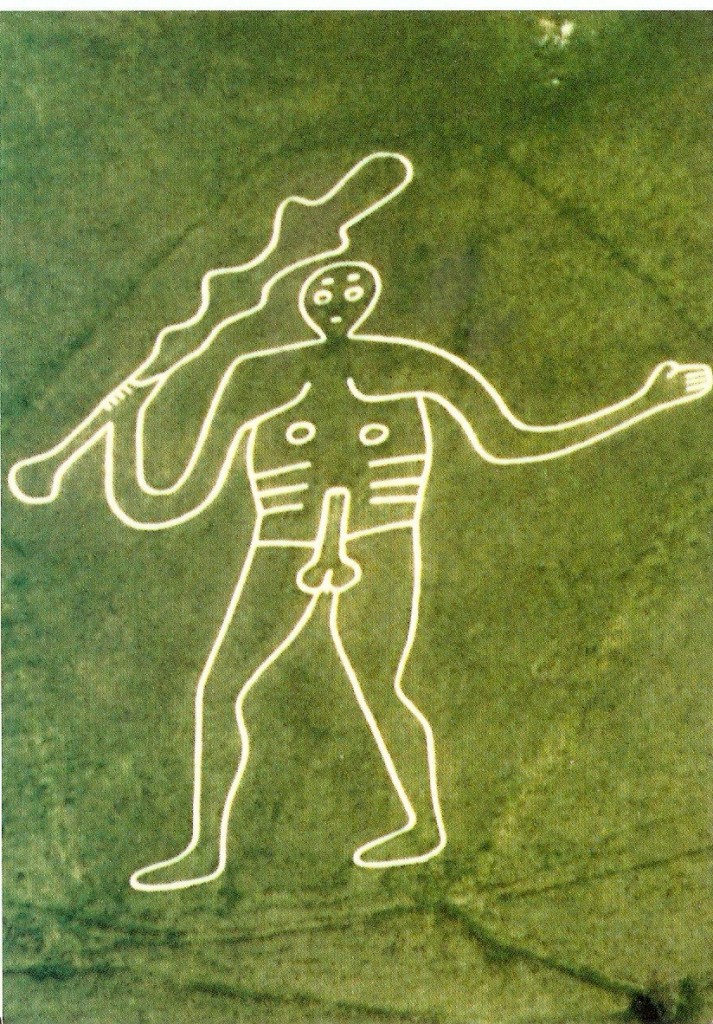The failed restaurant Pod, a Herriot + Melhuish designed restaurant which had been resident in a steel, zinc and glass box on the corner of Victoria St, has been butchered as an example of clean modern architecture, and has risen instead as a tack-ridden example of neo-celtic, mock-old, mock-new, mock serious, mock-everything irish theme bar called the Green Man.

They’ve certainly got their bases covered. The Masked Barfly has written of it in the Wellingtonista as “combined into a slick and consciously contrived “wackiness” with the sheen of an nascent franchise ready to spread from Queenstown to the Hutt, it’s enough to make the dirtiest of flies long for the clinical perfection of minimalism” and it certainly it seems confusing to offer spicy indian chips in a irish themed bar, and a far cry from the toucan and soft creamy colours of Molly Malone’s more authentially Irish bar. David Burton also reviewed it, and delivered a double whammy slammer, both to the failed Pod and also to the new Green Man, in terms of service and food.

While the pub food itself may be best avoided, the name is still quite interesting. Green Man is a common name of a pub in England and Ireland from way back, and denotes a heritage longer than you may think: referring back long ago before the invention of Guinness to the ancient Celts of pre-Christian Britain to a time when the gods celebrated lived in trees and bushes, not stony churches.

The image presented now appears to be a run-down version of Father Ted’s living room, or perhaps Father Jack’s bedroom. Quite why the owners wanted to install half-finished weatherboard wall partitions everywhere, make part of it look as it it was in a Soweto squatter-town with burned out timber framing, and the rest like your granny’s parlour albeit with a sub-Hog’s Breath decor: one may never know. However, I can believe that they really did want to pay homage to the Green Man of ancient celtic fertility rites – the following passage on the legends behind the Green Man may give us some idea of the possibilities the owners may have had in mind:
“Robin Hood was a species of fairy derived ultimately from the old Celtic and Saxon fertility god or vegetation deity, the so-called Green Man, while in popular folklore Robin Hood was interchangeable with Green Robin , Robin of the Greenwood, Robin Goodfellow, Shakespeare’s Puck in A Midsummer Night’s Dream, who, at at the summer solstice, presides over fertility, sexuality and nuptials. The Robin Hood legend provided, in effect, a handy guise whereby the fertility rites of ancient paganism were introduced back into the bosom of nominally Christian Britain. Every May Day, there would be a festival of unabashed pagan origin. Rituals would be enacted around the May Pole, traditional symbol of the archaic goddess of sexuality and fertility. On Midsummer’s Day, every village virgin would become, metaphorically, Queen of the May. Many of them would be ushered into the greenwood where they would undergo their sexual initiation at the hands of a youth playing the role of Robin Hood or Robin Greenfellow, while Friar Tuck, the Abbot of unreason, would officiate, blessing the mating couples in a parody of formal nuptials. By virtue of such role-playing, the borders separating dramatic masque and fertility ritual would effectively dissolve. May Day would be, in fact, a day of orgy. Nine months later, it would produce, throughout the British Isles, its annual crop of children.”
(from the temple and the lodge, by michail baigent and richard leigh). So, it sounds like a good place for a pick-up joint then! See you at the Green Man perchance, on May 1, for a quick pint?





While I can’t bring myself to even look in the mock leadlight windows of the pub, I couldn’t pass up the opportunity to point to our very own Green Man…
http://www.deadletteroffice.co.nz/nzdisease.html
It’s always sad to see someone’s concept fail to hit the mark and risk their investment in capital and time.
For the record, this pub has no affiliation with the long-standing Wellington consulting company The GreenMan Group – although it has doubled calls to our landline and hits on our website. Maybe we should have had a drinking division.